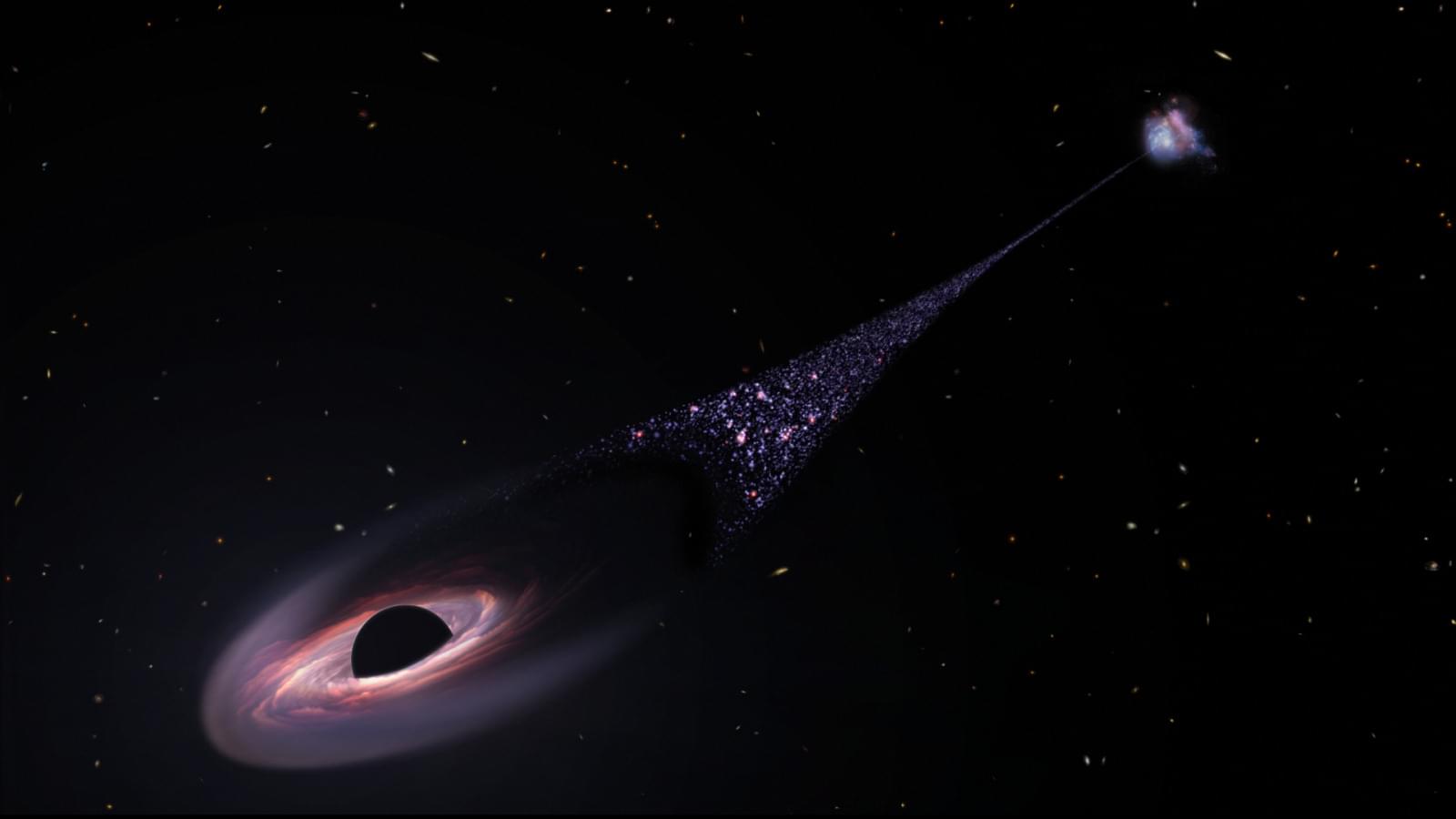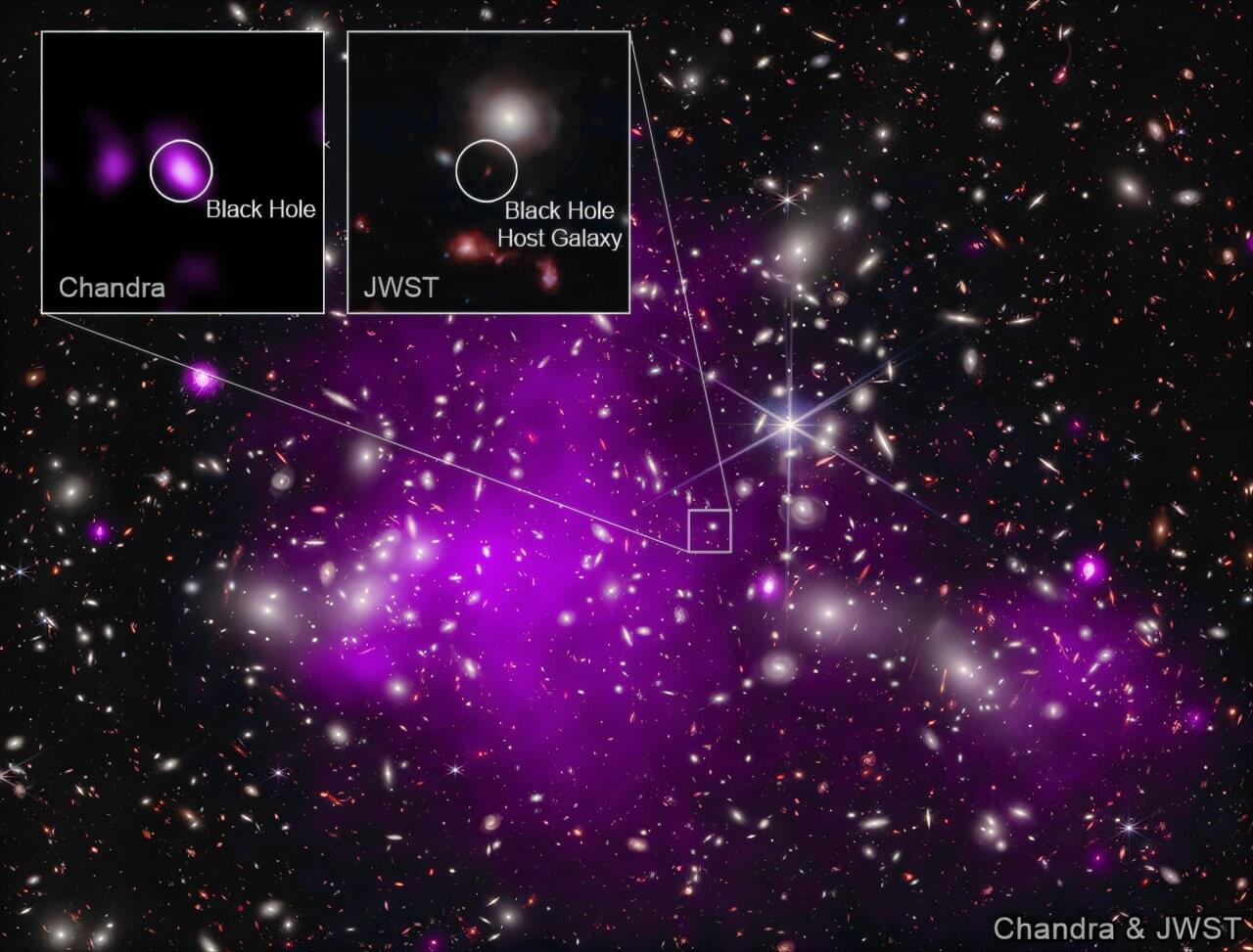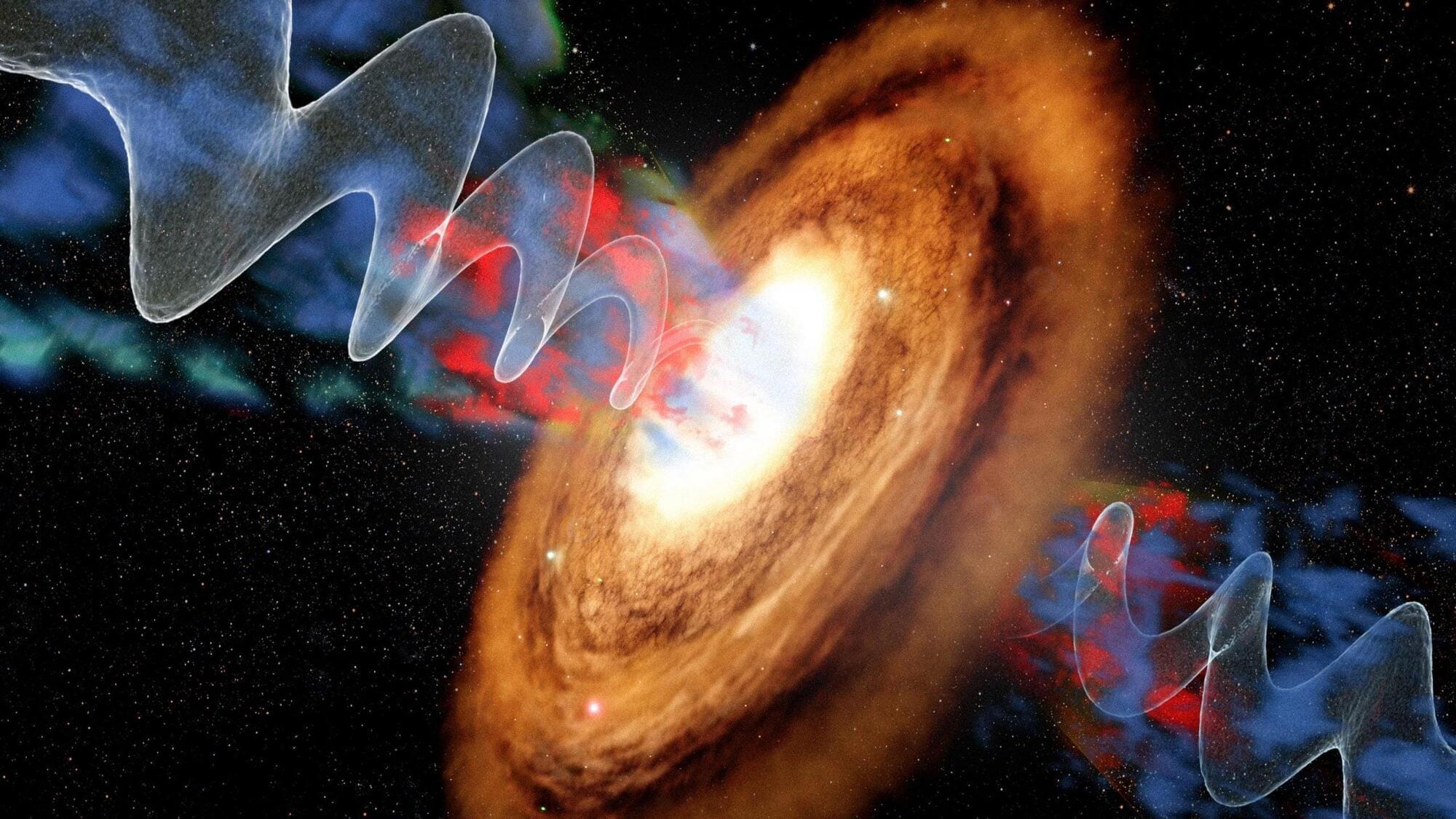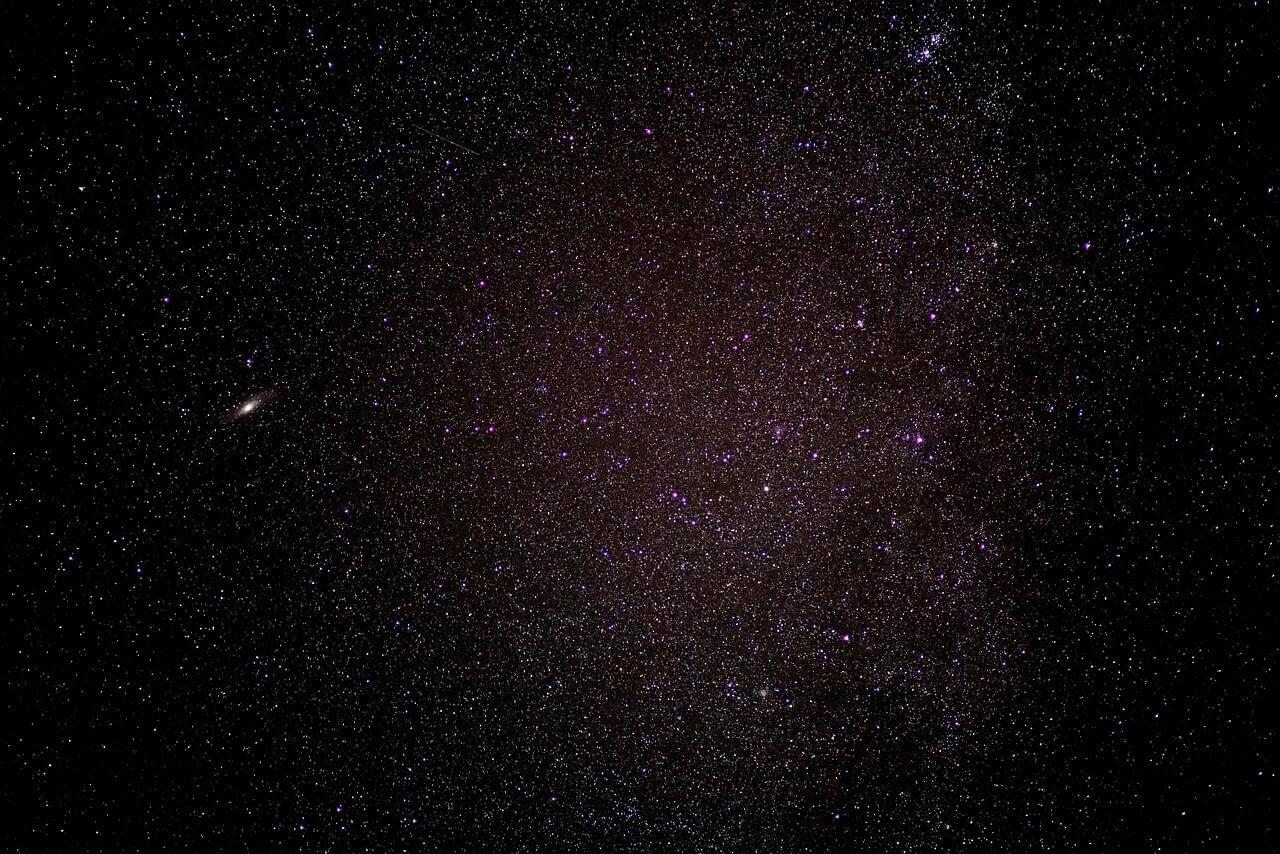JWST peered at the glowing trail of stars left behind by a candidate runaway supermassive black hole deep in space, revealing new insights after other telescopes looked at the event.



A recent study provides answers to three seemingly disparate yet pressing cosmic dawn puzzles. Specifically, the authors show how dark stars could help explain the unexpected discovery of “blue monster” galaxies, the numerous early overmassive black hole galaxies, and the “little red dots” in images from the James Webb Space Telescope (JWST).
The work is published in the journal Universe. It was led by Colgate Assistant Professor of Physics and Astronomy Cosmin Ilie, in collaboration with Jillian Paulin at the University of Pennsylvania, Andreea Petric of the Space Telescope Science Institute, and Katherine Freese of the University of Texas at Austin.
The first stars in the universe form in dark matter-rich environments, at the centers of dark matter microhalos. Roughly a few hundred million light-years after the Big Bang, molecular clouds of hydrogen and helium cooled sufficiently well to begin a process of gravitational collapse, which eventually led to the formation of the first stars.


Scientists are a step closer to solving one of the universe’s biggest mysteries as new research finds evidence that two of its least understood components may be interacting, offering a rare window into the darkest recesses of the cosmos.
The University of Sheffield findings relate to the relationship between dark matter, the mysterious, invisible substance that makes up about 85% of the matter in the universe, and neutrinos, one of the most fundamental and elusive subatomic particles. Scientists have overwhelming indirect evidence for the existence of dark matter, while neutrinos, though invisible and with an extremely small mass, have been observed using huge underground detectors.
The standard model of cosmology (Lambda-CDM), with its origins in Einstein’s general theory of relativity, posits that dark matter and neutrinos exist independently and do not interact with one another.


In 1181 AD, a bright “guest star” was observed to linger in the sky for around six months. Nearly 850 years later, the likely remnants of this event were rediscovered and tentatively linked to the 1181 supernova and dubbed supernova remnant (SNR) Pa 30. Yet, this supernova remnant was unique in appearance and researchers have struggled to understand why.

When it comes to understanding the universe, what we know is only a sliver of the whole picture.
Dark matter and dark energy make up about 95% of the universe, leaving only 5% “ordinary matter,” or what we can see. Dr. Rupak Mahapatra, an experimental particle physicist at Texas A&M University, designs highly advanced semiconductor detectors with cryogenic quantum sensors, powering experiments worldwide and pushing the boundaries to explore this most profound mystery.
Mahapatra likens our understanding of the universe—or lack thereof—to an old parable: “It’s like trying to describe an elephant by only touching its tail. We sense something massive and complex, but we’re only grasping a tiny part of it.”

Using the Whole Earth Blazar Telescope (WEBT), an international team of astronomers have performed long-term photometric observations of a luminous blazar known as Ton 599. Results of the observations, published in the Astronomy & Astrophysics journal, shed more light on the optical variability of this object.
Blazars are very compact quasi-stellar objects (quasars) associated with supermassive black holes (SMBHs) at the centers of active, giant elliptical galaxies. They are the most luminous and extreme subclass of active galactic nuclei (AGNs). The characteristic features of blazars are highly collimated relativistic jets oriented very close to our line of sight.
Based on their optical emission properties, astronomers generally divide blazars into two classes: flat-spectrum radio quasars (FSRQs) that feature prominent and broad optical emission lines, and BL Lacertae objects (BL Lacs), which do not.


How common are Earth-like planets in the universe? When I started working on supernova explosions, I never imagined that my research would eventually lead me to ask a question about the origin of Earth-like planets. Yet that is exactly where it brought me.
For decades, planetary scientists have believed that the early solar system was enriched with short-lived radioactive elements—such as aluminum-26—by a nearby supernova. These radioactive elements played a crucial role in forming water-depleted rocky planets such as Earth. Their decay heated young planetesimals, causing them to lose much of their originally accreted water and other volatile materials.
There was just one problem that kept bothering me.